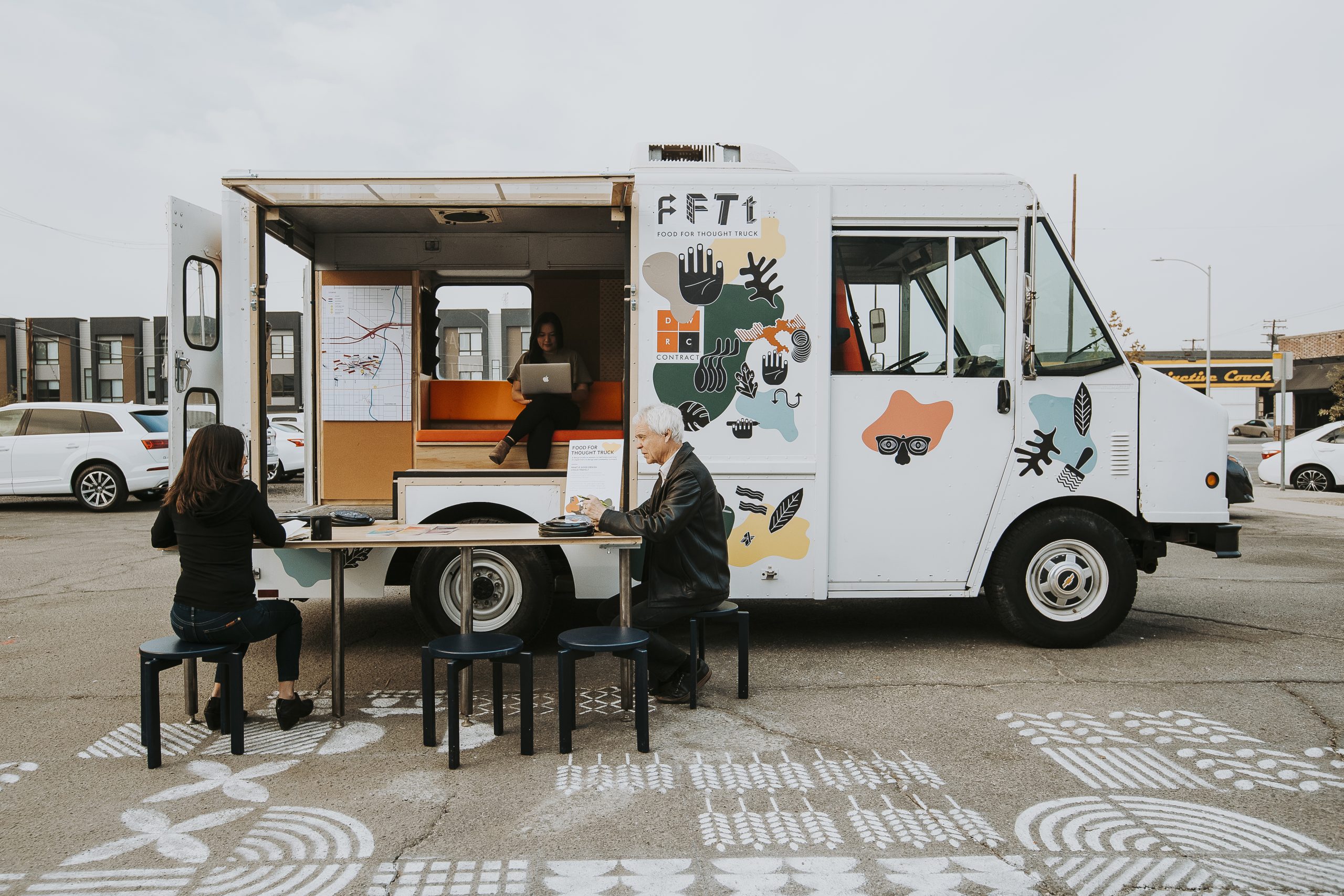“But I came to the realization that right now, we all need to be activists in some way.”
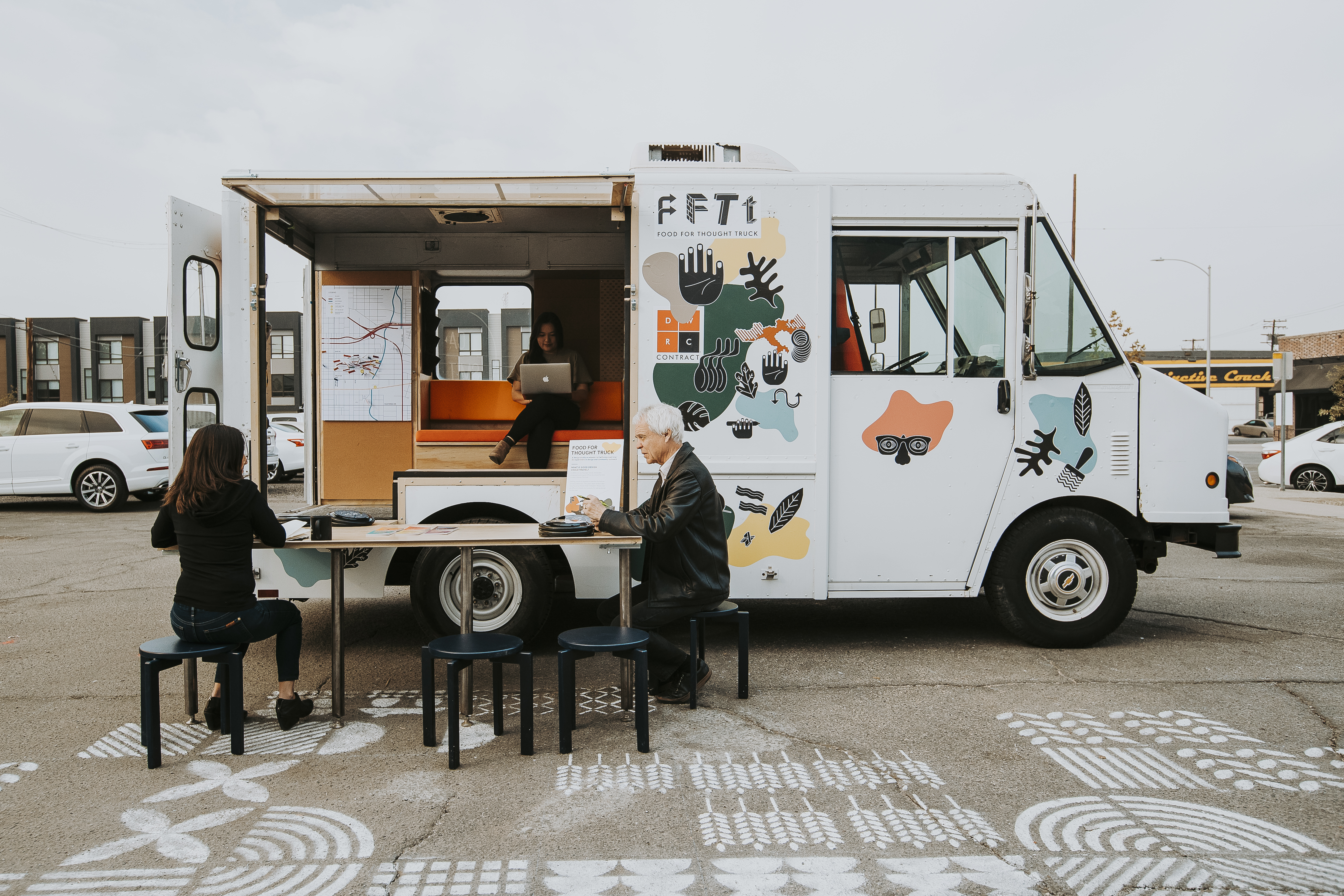
A year and a half ago, I embarked on one of the craziest projects of my career—and took my office along for the ride. We bought a food truck, named it the Food for Thought Truck, and converted it into a mobile design office. We then took the truck on the road in search of projects outside the office. My goal at first was to get my designers to work in unfamiliar situations and apply our design process to atypical projects in hopes of jump-starting creativity and developing fresh perspectives. I always wanted to get my feet wet in designing for good!
More recently, I realized that the Food for Thought Truck could be much bigger than just helping our team. It has now become a way for designers to take a stand at a time when the design status quo doesn’t feel like enough. Politics are a mess, inequality is widening, and the climate is rapidly changing. It is no longer enough to design comfortable and beautiful work environments. It’s time to see what more design can do to help solve some of these problems facing our world today.
I admit to being tentative at first. I’m not an activist, I thought. No way! Leave the protesting and the marching to someone else. But I came to the realization that right now, we all need to be activists in some way. The Food for Thought Truck project got my team and me out there on the front lines, engaging with urban communities and together discovering the power of design to mobilize and transform the world.
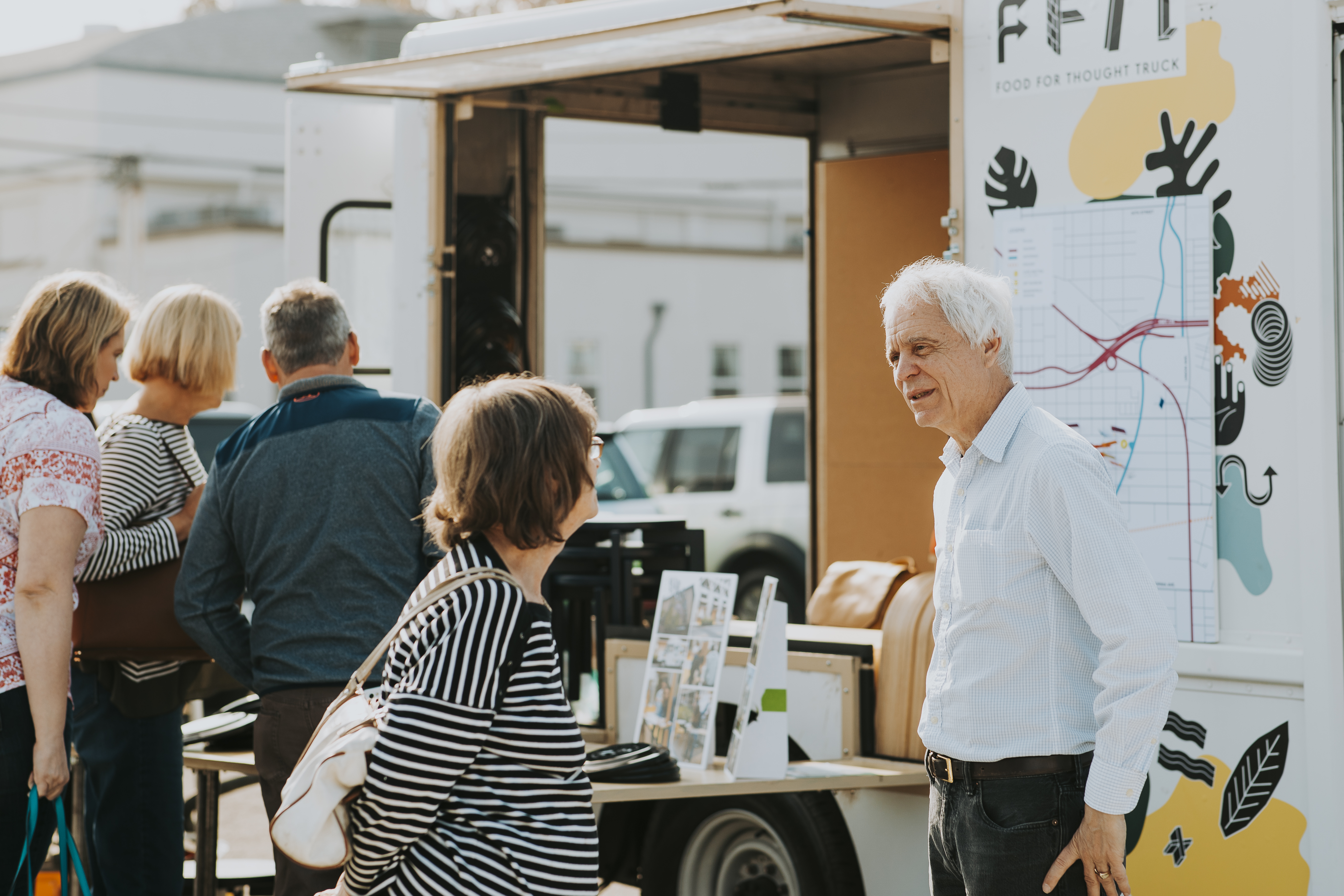
I felt though, like it only scratched the surface of possibility. Was it too tentative? When Metropolis Magazine invited me to host a think tank in San Francisco, I decided to continue the conversation with a talk I titled Designer X Activist. I invited Douglas Burnham of the Berkeley architecture firm Envelope A+D, and JD Beltran, an educator who runs the Center for Impact at California College for the Arts.
We started by talking about what an activist is, defining the term, and asking why it had become such a ‘dirty’ word. Traditionally, activism has come to mean protesting, marching with a big sign, or tying yourself to a tree, etc. It has also often means exposing a dilemma, and turning the tide on public opinion or swaying government officials. Think the Occupy movement, and the Me Too movement. Millions of people who didn’t consider themselves activists marched in the Women’s March of 2017.
So, we three panelists, and moderator Avinash Rajagopal, of Metropolis talked about everything from sorting recyclables properly to transforming neighborhoods by activating space. JD Beltran spoke of weekly “trash talks” she hosts at California College of the Arts where students and faculty learn how to recycle properly. Douglas Burnham described how Envelope has transformed neighborhoods through relatively simple acts of inclusive activation. Sustainability, building smarter and greener, was the largest part of the conversation. At one point someone even asked how to make greener choices when often they aren’t the most aesthetic. We are designers after all.
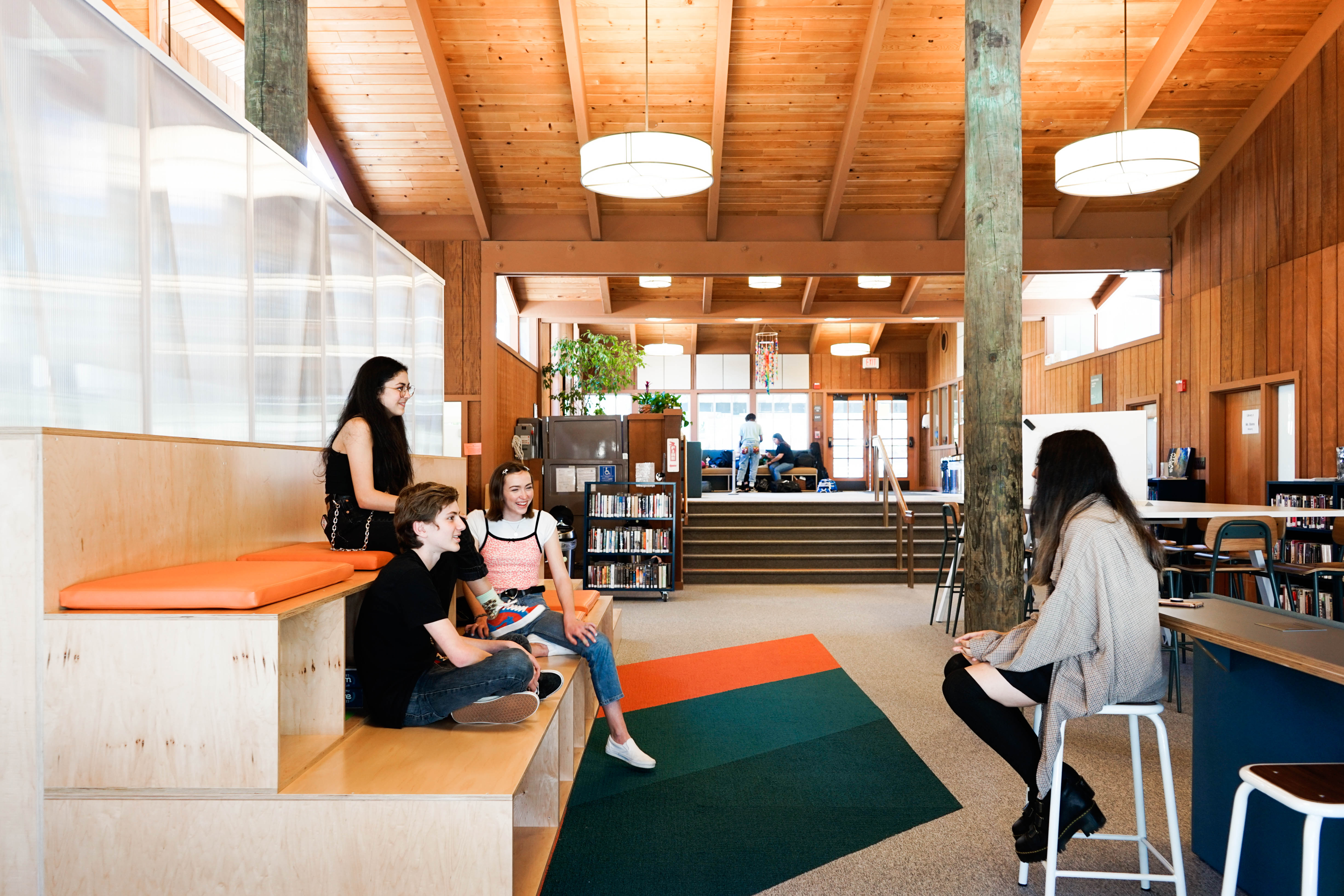
The big take away for me, was something I learned that day from Avinash. For all its high-tech sustainability, he explained, the new Google campus will never be more sustainable than the old campus. Because it’s already built! After the talk I researched the idea of embodied carbon. There are two big carbon expenditures with a building – the functioning, heating and cooling, etc. over its lifetime, and the materials used to make that building or space in the first place. This carbon expenditure is called embodied carbon. We can’t ignore that building a building or a space takes a lot of carbon and adds a lot of greenhouse gas to the atmosphere. But we don’t want to be activists for not designing projects, or we’ll all be out of business. Maybe we can advocate for designing smarter and in ways that use fewer materials.
For designers the program is paramount. Studio O+A’s motto has always been to listen to the client. But even if it isn’t our clients’ agenda to work with less, or be more responsible or be more inclusive, I think it’s our responsibility to steer them that way. There are things the design community has already embraced like not specifying hazardous or toxic materials or avoiding materials acquired through unjust labor practices or choosing more sustainable options whenever possible. But are we willing to take that further? Can we actually tailor our designs to use less, waste less, let the environmental agenda drive our aesthetic choices? I think the results could be even more beautiful.
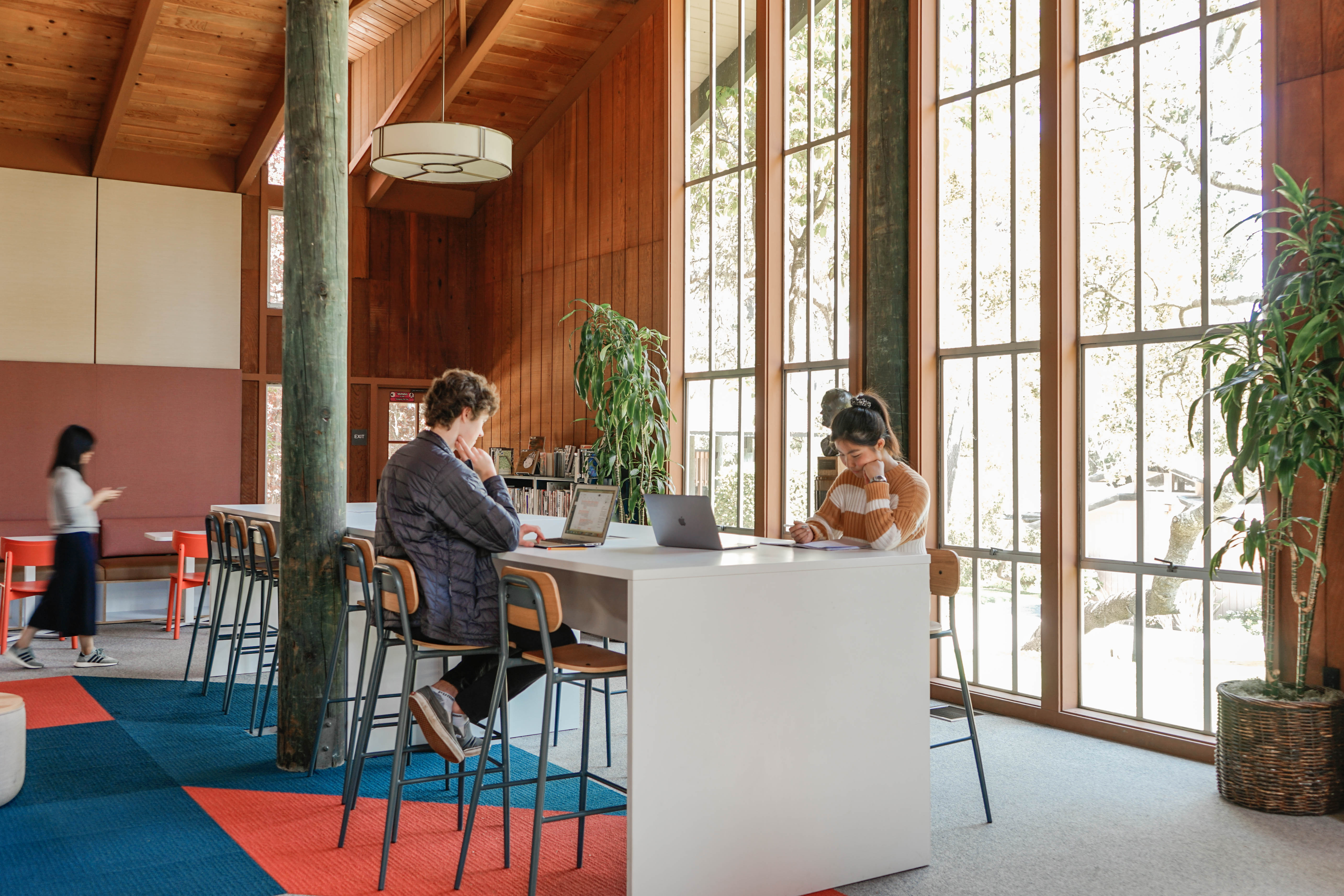
The other side of the environment is people. I know in San Francisco it has become increasingly hard to stay in our office bubbles. Every time we walk outside, we see the cracks in the city and the growing despair. I believe every company in San Francisco has a responsibility to engage with their neighborhood and the city in some way. And again, maybe it’s up to us to put that agenda in front of our clients. A design firm in San Francisco recently created a community gallery as part of a high-rise corporate campus in a rapidly gentrifying neighborhood. The gallery functions as a gathering space and as a place to provide a voice through art and showcase the local talent. It was a simple but lasting gesture that wasn’t initially part of the client’s program. But it wasn’t so hard to carve out that small extra space and say to the client, “Hey, I have an idea to activate this corner of the lobby.” It involved adding to the program, advocating for neighbors in a community, and remembering that a designer’s first challenge is finding a path to meaningful space.

